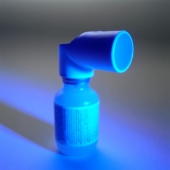
TUESDAY, Oct. 29 (HealthDay News) — The last two inhalers to contain chlorofluorocarbons (CFCs), which deplete the ozone layer, will be removed from the market by Dec. 31, the U.S. Food and Drug Administration has announced.
That will complete the agency’s long-running plan to phase out all of these types of inhalers, to comply with an international treaty that aims to protect the Earth’s ozone layer, the FDA said in a news release.
Inhalers typically are used to deliver the drug albuterol, which treats asthma and chronic obstructive pulmonary disease (COPD). More than 25 million people suffer from asthma, and another 15 million have been diagnosed with COPD, a serious lung disease that gets worse with time.
“CFCs were used as propellants to move the drug out of inhalers so that patients could inhale the medicine,” Dr. Badrul Chowdhury, director of the Division of Pulmonary, Allergy and Rheumatology Products in the FDA’s Center for Drug Evaluation and Research, said in a news release. “For more than two decades, the FDA and EPA have collaborated to phase out CFCs in inhalers — a process that included input from the public, advisory committees, manufacturers and stakeholders.”
Although most inhalers using CFCs were phased out in 2008, two CFC inhalers remained: Combivent Inhalation Aerosol and Maxair Autohaler. Those who have asthma or COPD who use these inhalers should ask their doctor about alternative treatments, the FDA said.
For the most part, CFC inhalers have been replaced by inhalers powered by hydrofluoroalkanes (HFA), which are ozone friendly.
The FDA has approved three HFA-propelled albuterol inhalers: ProAir HFA, Proventil HFA and Ventolin HFA. An HFA-propelled inhaler containing levalbuterol, a medicine similar to albuterol, is available as Xopenex HFA, the agency said.
The discontinuation of CFC-propelled inhalers is the result of both the U.S. Clean Air Act and an international treaty known as the Montreal Protocol on Substances That Deplete the Ozone Layer.
More information
For more on inhalers, visit the U.S. Food and Drug Administration.
Copyright © 2025 HealthDay. All rights reserved.

